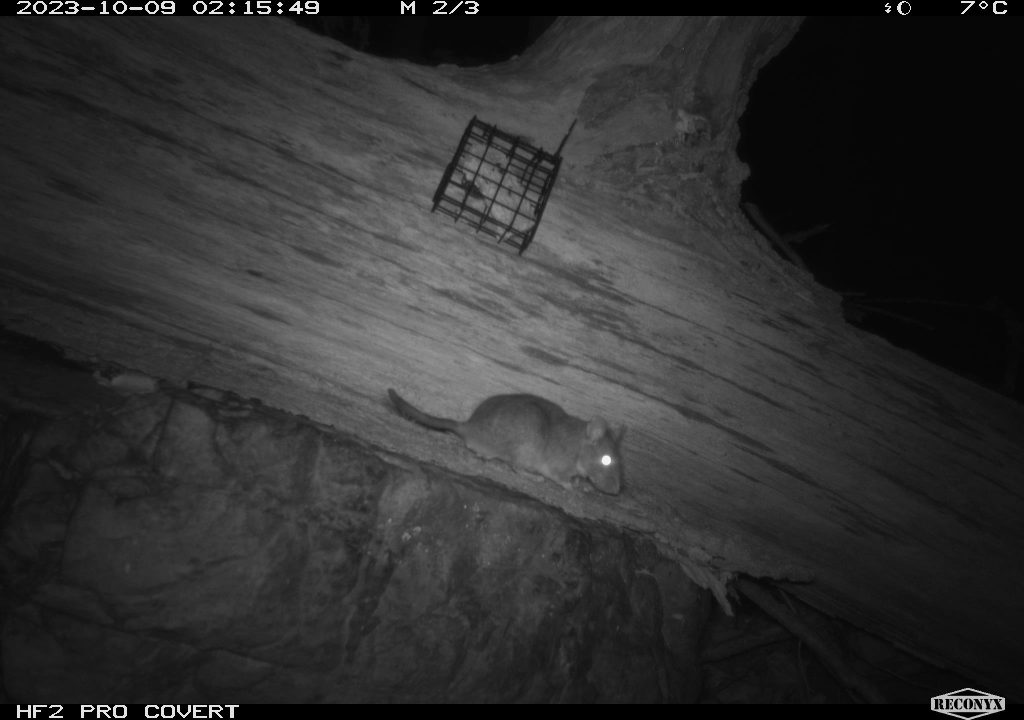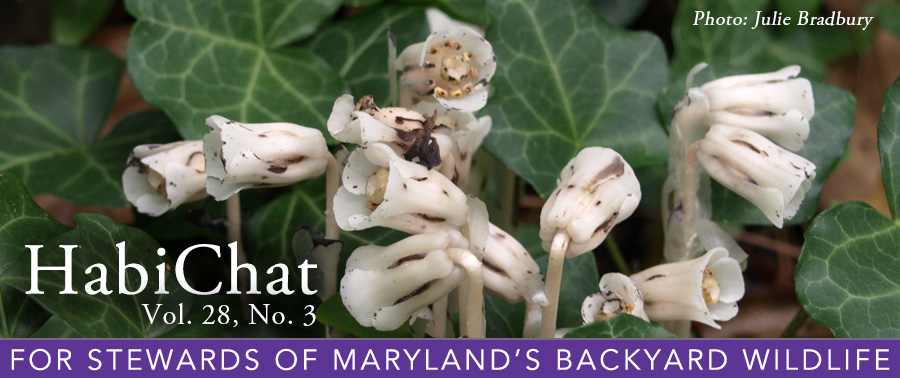
Allegheny Woodrat, by NHP staff ecologist Megan Zagorski
With cooler fall weather comes some of the most popular times to get outside and enjoy our favorite forms of recreation. Whether that’s camping, hiking, biking, climbing, just parking at a scenic spot to watch the sunset,our activities can and do have a profound effect on the wildlife with whom we share Maryland’s natural resources. Many are aware of the famed “Leave No Trace Principles”, a beloved tenet of seven ideals for outdoor recreation. For those that keep protection of Maryland’s rarest species front of mind, the ideal low-impact recreation can go beyond Leave No Trace. Here are some tips from the staff at the Wild Acres Program on being the best, most responsible stewards as you explore wildlife outside your backyard habitats.
- Traveling off trails can be tempting, especially when the ground appears bare and uninhabited. As long as you’re not squishing a plant or animal, you’re not doing any damage, right? Wrong! Our soils house huge networks of fungal mycelia, tree roots, invertebrates and other critters that would appreciate not being repeatedly squished if it’s avoidable. Some ecosystems, like the serpentine barrens at Soldiers Delight, appear sparsely vegetated but actually house a wealth of tiny rare wildflowers that depend on our trails to protect them from trampling. Plus…
- People and pets are notorious for spreading invasive species, one of the greatest threats to biodiversity and rare species in Maryland. Besides staying on trails, you can help by cleaning your shoes, waders, and clothes between hikes in different areas; this can prevent the spread of not only invasive plant species, but also some very scary fungal wildlife diseases. If you’re camping or driving off road, this also means cleaning your equipment and avoiding transporting firewood to prevent transporting insect pests. Attention to cleaning is also important if you’re visiting any place Maryland’s cave bats may live, as your caution could prevent the spread of the bat killing white nose syndrome.
- We all know not to litter, but if you want an extra “gold star” from nature, always bring a bag and gloves so you can help pick up what others left behind. Challenge yourself to always remember a reusable water bottle and pack picnics that have zero waste, so you don’t have any trash to pack out.
- Trash isn’t the only pollution- noise can be too! Many species depend on natural soundscapes to find food, communicate, or navigate. Consider leaving that bluetooth speaker at home on your hike. One of the first signals that wildlife is near can be a sound, so you may miss a once-in-a-lifetime sight by adding your own soundtrack!

Wildlife camera footage of an Allegheny Woodrat
- Respecting wild animals doesn’t just mean not taking them home or offering them a snack (never feed wildlife!). Remember that our surroundings are our wild neighbors’ homes! Would you want someone to rip off your roof or dig up your garden? Leave the natural areas you explore in the exact same condition you found them. Roll the log back over after you’ve searched for that salamander! Never build rock cairns (especially in streams, where they disrupt the habitats of rare and sensitive creatures like invertebrate larvae and the hellbender salamander). Rather than scrabble up that gravelly hillside off-trail, skip it and avoid damaging hidey-holes for a wide variety of species and possibly creating erosion.
- When choosing a spot to visit, use reliable resources for guidance rather than depending on user-sourced internet information; user reviews and reports often list unsanctioned or “social” trails that can damage protected areas and encourage trampling of rare plant species. If the crowds at well-known spots are getting you down, consider less developed areas like Maryland’s wildlife management areas, natural areas, and state forests; remember to wear blaze orange during hunting seasons in areas where hunting is allowed.
- Visit public lands at off peak times like weekdays or early mornings whenever possible. Besides adding to your enjoyment, avoiding large crowds eases the conservation issues associated with them. Visiting during peak times can mean that parking lots and trails get overloaded, which encourages travel off of durable surfaces; this can mean the soil gets irreparably compacted and prevents plant growth or erodes the soils, adding sediment and pollutants to our waterways. If a parking lot is full, change your day’s plans to a new adventure or consider coming back at a later time.
- Avoid high impact activities like horseback riding or biking after weather events, as the trails can be extra vulnerable to lasting damage and erosion. During these times, consider more passive ways to appreciate your favorite trail or vista. For example, you could establish a favorite “sit spot”, or a spot where you repeatedly visit, sit and watch the changes happening in nature. Sometimes an activity as simple as finding a place to watch the sunrise or sunset or observe the changing seasons once a week can have the same mental health benefits as a long walk.
- Going swimming? Think about what’s on your body, perhaps using a sun shirt or hat instead of chemical sunscreens. Simply rinsing off in the shower before a river swim or choosing your cosmetics with care can prevent harmful chemicals from entering our waterways.
- Time for a climb? If you’re a rock climber, the importance of staying in established climbing areas cannot be understated. Rock crevices create valuable habitat for rare species like woodrats and bats, and your hands and feet – or worse, cleaning a new route in an unsanctioned climbing area – can cause lasting and damaging effects, altering microclimates and rapidly destroying good habitat. At the very least, read up on the best times of day or preferred seasons to utilize climbing areas that are shared with wildlife (which is almost all of them!) to create minimal impacts to wildlife.
While you’re exploring public lands, consider contributing to community science. At the very least, we challenge you to learn one thing about wildlife each time you head outside. We hope you’ll take your firsthand experiences this fall and help us teach others to love our Maryland wildlife!

